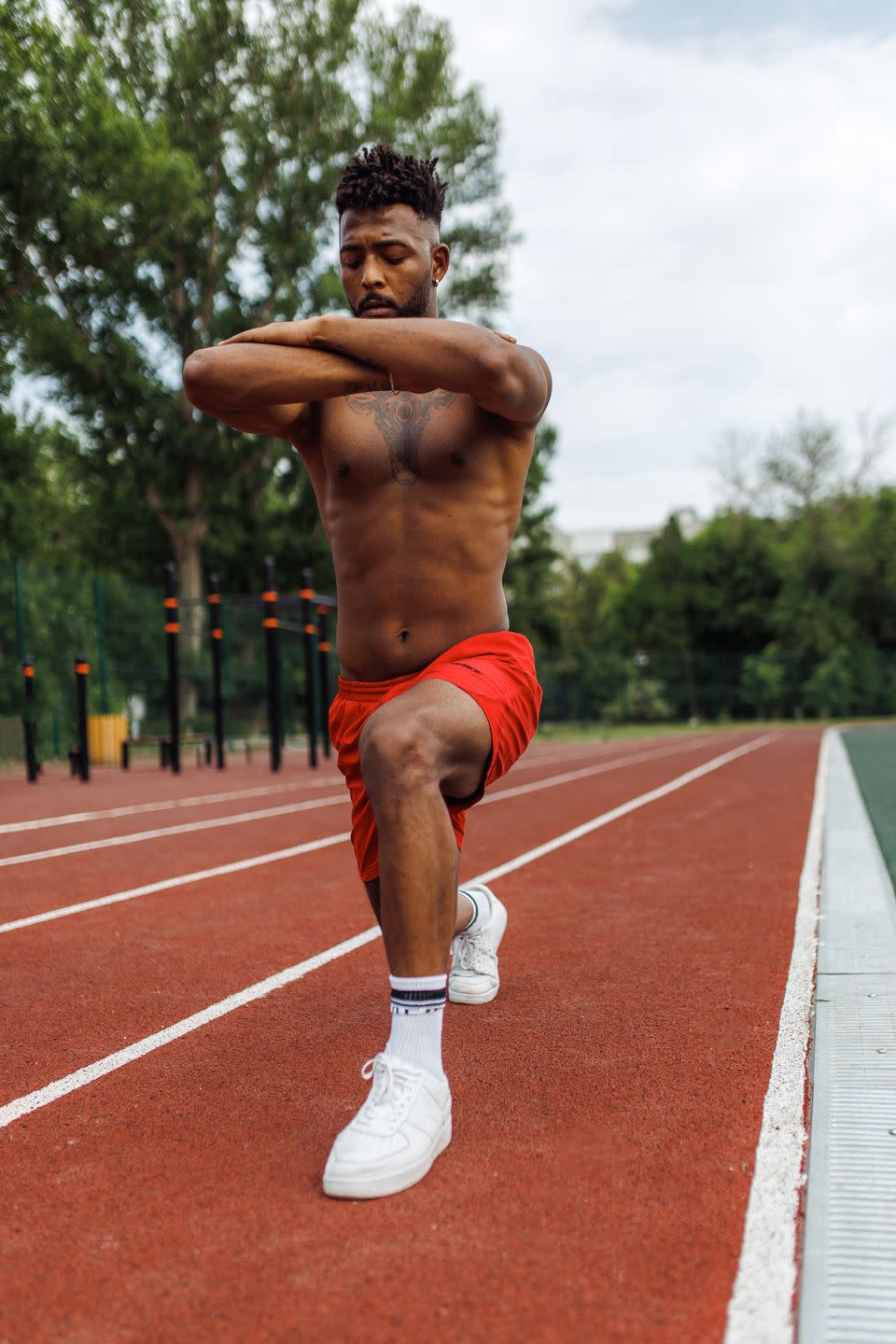New Research Says Bodyweight Exercises Could Build as Much Muscle as Barbell Back Squats

With hotter weather on the cards, you may be thinking of swapping your gym visits for park workouts. There's a problem, though. When it comes to gains, outdoor workouts aren't as effective as your standard gym sesh, right? Well, no. In fact, according to new evidence, providing you include certain lower body bodyweight moves, you won't be missing out on muscle gains at all.
The new research, published in Scientific Reports, set out to compare the effects of progressive bodyweight training and barbell back squats on muscle strength, muscular hypertrophy, and body fat percentage in sedentary participants. Over six weeks, the participants were randomly allocated to one of two groups:
Group 1: Barbell back squat training, six sets of five reps to maximal effort, at least to parallel.
Group 2: Bodyweight training, six sets of eight-12 reps consisting of lunges, Bulgarian split squats and skater squats.
They also had an initial period of two weeks to learn the exercise techniques. Each twice weekly session lasted 60 minutes and was separated by at least 48 hours. The sessions included of a 15-min warm up consisting of 10 activities, followed by 30 minutes of squat exercises. There was a 15 minute cool down consisting of eight exercises. The warm up and cool down exercises were the same for both experimental groups.

Both groups used the RPE scale to measure exertion and total training volume was calculated. The researchers measured strength, hypertrophy and body fat levels before and after the intervention. They measured muscle growth in the quads, glutes and calves and total body strength gain.
The researchers found no differences in muscular strength and size between the groups. Participants in the barbell back squat group experienced a reduction in body fat percentage without a change in body weight — which was accounted for by their higher body fat percentage starting point.
While it has a small sample size and the participants were sedentary before the intervention, the research is fairly robust and in line with previous studies supporting that lower loads will elicit similar muscle growth to higher loads when programmed effectively.
The evidence means that if we are subbing our heavy weight sessions for outdoor bodyweight sessions this summer, we might not lose out muscle gains. Providing we focus on pushing close to failure, pursuing high intensity and volume within those bodyweight training sets, we may see just as much progress from our workouts.
You Might Also Like


